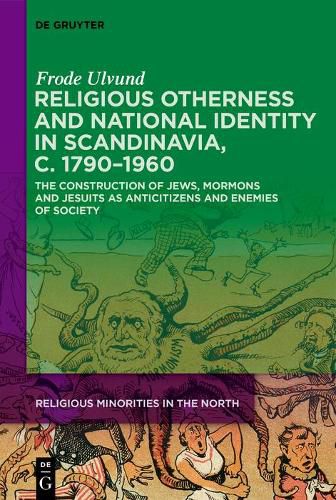Readings Newsletter
Become a Readings Member to make your shopping experience even easier.
Sign in or sign up for free!
You’re not far away from qualifying for FREE standard shipping within Australia
You’ve qualified for FREE standard shipping within Australia
The cart is loading…






This title is printed to order. This book may have been self-published. If so, we cannot guarantee the quality of the content. In the main most books will have gone through the editing process however some may not. We therefore suggest that you be aware of this before ordering this book. If in doubt check either the author or publisher’s details as we are unable to accept any returns unless they are faulty. Please contact us if you have any questions.
The author discusses how religious groups, especially Jews, Mormons and Jesuits, were labeled as foreign and constructed as political, moral and national threats in Scandinavia in different periods between c. 1790 and 1960. Key questions are who articulated such opinions, how was the threat depicted, and to what extent did it influence state policies towards these groups. A special focus is given to Norway, because the Constitution of 1814 included a ban against Jews (repelled in 1851) and Jesuits (repelled in 1956), and because Mormons were denied the status of a legal religion until freedom of religion was codified in the Constitution in 1964. The author emphasizes how the construction of religious minorities as perils of society influenced the definition of national identities in all Scandinavia, from the late 18th Century until well after WWII. The argument is that Jews, Mormons and Jesuits all were constructed as anti-citizens , as opposites of what it meant to be good citizens of the nation. The discourse that framed the need for national protection against foreign religious groups was transboundary. Consequently, transnational stereotypes contributed significantly in defining national identities.
$9.00 standard shipping within Australia
FREE standard shipping within Australia for orders over $100.00
Express & International shipping calculated at checkout
This title is printed to order. This book may have been self-published. If so, we cannot guarantee the quality of the content. In the main most books will have gone through the editing process however some may not. We therefore suggest that you be aware of this before ordering this book. If in doubt check either the author or publisher’s details as we are unable to accept any returns unless they are faulty. Please contact us if you have any questions.
The author discusses how religious groups, especially Jews, Mormons and Jesuits, were labeled as foreign and constructed as political, moral and national threats in Scandinavia in different periods between c. 1790 and 1960. Key questions are who articulated such opinions, how was the threat depicted, and to what extent did it influence state policies towards these groups. A special focus is given to Norway, because the Constitution of 1814 included a ban against Jews (repelled in 1851) and Jesuits (repelled in 1956), and because Mormons were denied the status of a legal religion until freedom of religion was codified in the Constitution in 1964. The author emphasizes how the construction of religious minorities as perils of society influenced the definition of national identities in all Scandinavia, from the late 18th Century until well after WWII. The argument is that Jews, Mormons and Jesuits all were constructed as anti-citizens , as opposites of what it meant to be good citizens of the nation. The discourse that framed the need for national protection against foreign religious groups was transboundary. Consequently, transnational stereotypes contributed significantly in defining national identities.